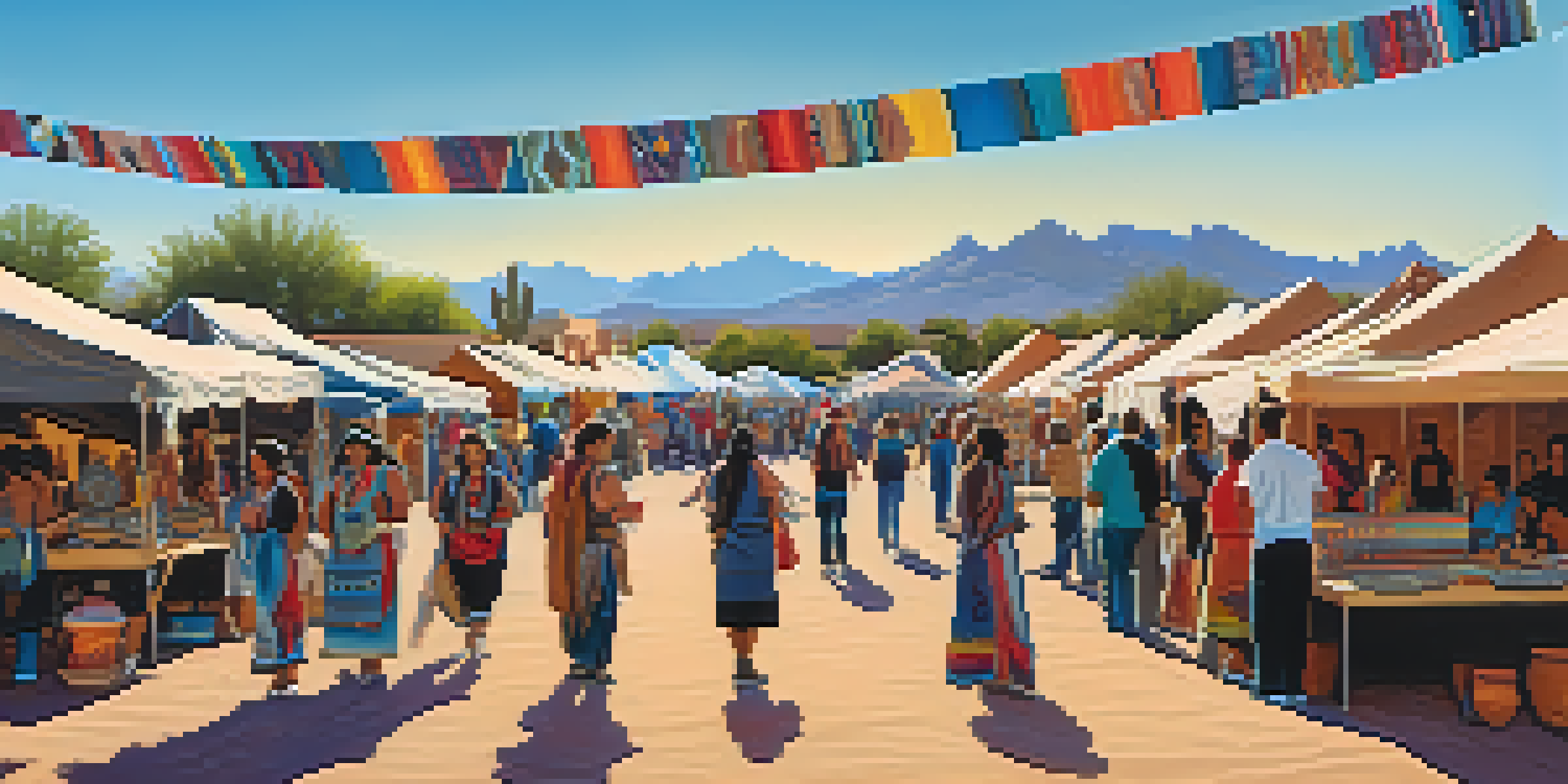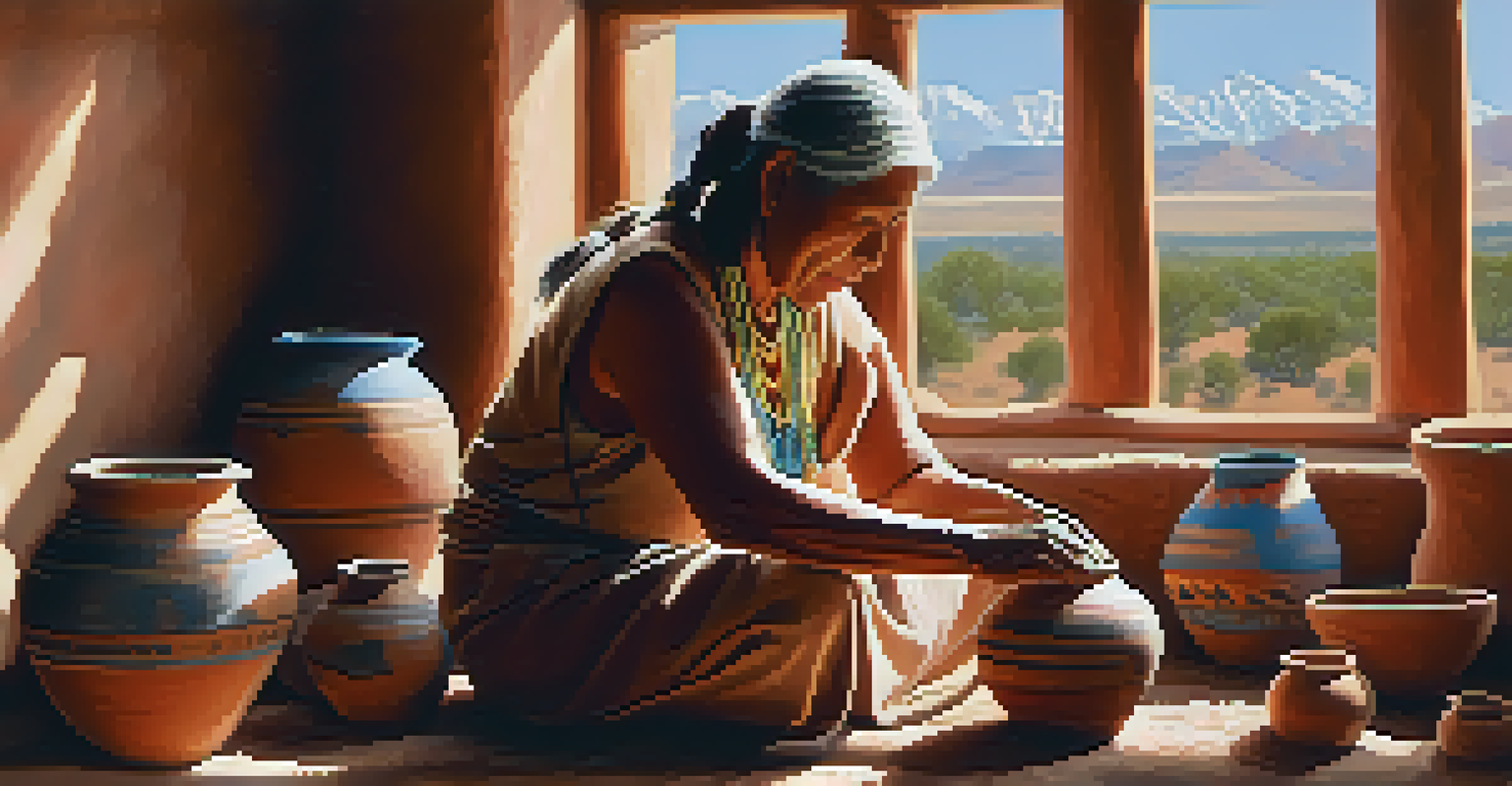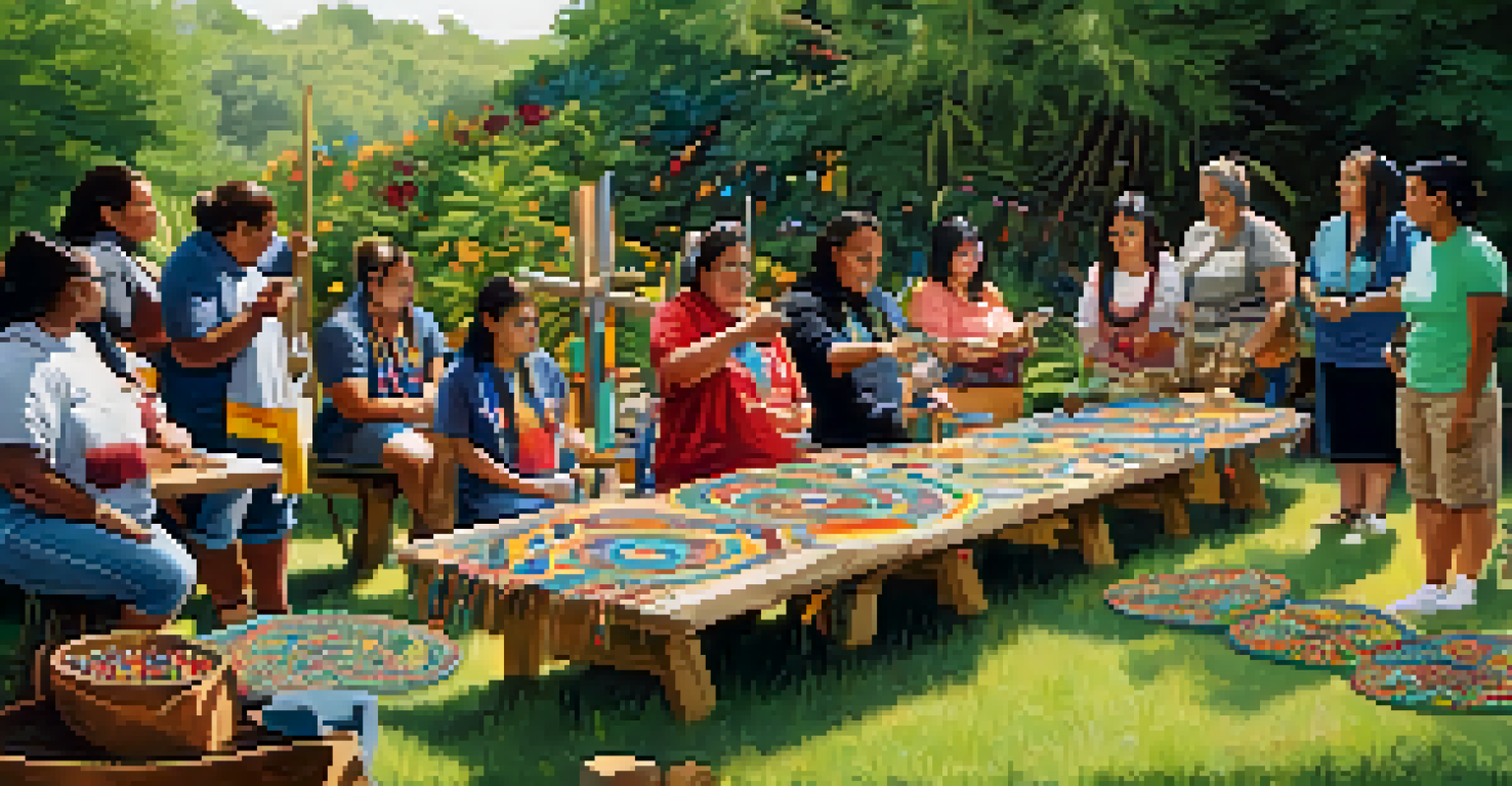Tucson as a Center for Native American Art and Expression

The Rich Heritage of Native American Art in Tucson
Tucson, Arizona, stands as a vibrant testament to the rich heritage of Native American art. With a history that intertwines various Indigenous cultures, the city serves as a canvas for traditional and contemporary forms of expression. From intricate pottery to stunning textile work, Tucson mirrors the diverse narratives of its Native American communities.
Art is not what you see, but what you make others see.
The local art scene is deeply influenced by tribes such as the Tohono O'odham and Pascua Yaqui, who have called this region home for centuries. Their craftsmanship not only preserves age-old techniques but also tells powerful stories through each piece. Visitors can witness how these traditions are celebrated and adapted in modern art forms.
Moreover, Tucson's art galleries and cultural institutions play a crucial role in showcasing this heritage. Events like art walks and exhibitions provide platforms for Native artists to present their work, fostering a deeper appreciation for their culture among both locals and tourists.
Key Institutions Supporting Native American Art
Several institutions in Tucson are dedicated to promoting Native American art, with the Tucson Museum of Art being a notable example. This museum houses an impressive collection of Indigenous artwork, offering insights into the techniques and themes prevalent in Native cultures. Its exhibitions often highlight both historical and contemporary pieces, bridging the gap between past and present.

In addition, the Arizona-Sonora Desert Museum celebrates the natural environment that shapes Indigenous art forms. Craft workshops and educational programs encourage community engagement, allowing participants to learn directly from Native artisans. This hands-on approach not only preserves traditional skills but also enriches the cultural landscape of Tucson.
Tucson's Vibrant Native Art Scene
Tucson showcases a rich array of Native American art that reflects the diverse cultures and traditions of Indigenous communities.
Another important venue is the Native American Community Action Team (NACAT), which hosts events to uplift local artists. Through festivals and art fairs, NACAT creates opportunities for artists to connect with the community, fostering an environment where art becomes a shared experience.
Artistic Styles Reflecting Cultural Narratives
The artistic styles found in Tucson are as diverse as the tribes that inspire them. Traditional pottery, for instance, often features intricate designs that symbolize nature, spirituality, and community. These pieces not only serve functional purposes but also act as storytelling mediums, passing down knowledge through generations.
The power of art is not the power of the artist. It is the power of the audience to see themselves in the work.
Similarly, beadwork is a prominent art form that showcases vibrant colors and patterns, each carrying its own significance. Many artists blend traditional techniques with contemporary themes, creating pieces that resonate with both Indigenous and modern audiences. This fusion allows for a dynamic dialogue between cultures, enriching the art community in Tucson.
Furthermore, contemporary Native American artists in Tucson are gaining recognition for their innovative approaches. By addressing social issues and personal narratives through their work, they challenge stereotypes and open conversations about identity and belonging. This evolution in artistic expression highlights the ongoing relevance of Native voices in today’s society.
The Role of Arts Festivals in Celebrating Native Culture
Arts festivals in Tucson serve as vibrant celebrations of Native American culture, offering platforms for artists to showcase their work. Events like the Tucson Folk Festival and the All Souls Procession incorporate Indigenous elements, emphasizing the city’s commitment to cultural diversity. These gatherings foster a sense of community, bringing together artists, families, and visitors.
During these festivals, attendees can participate in workshops, demonstrations, and performances, providing a deeper understanding of Native art forms. Such interactive experiences allow for meaningful connections between artists and the public, creating lasting memories and appreciation for Indigenous cultures. The atmosphere is often electric, filled with music, dance, and storytelling.
Supportive Institutions for Artists
Local institutions like the Tucson Museum of Art and NACAT play vital roles in promoting Native American artists and preserving their heritage.
Moreover, these festivals highlight the importance of preserving Indigenous traditions while encouraging innovation. By showcasing both historical and contemporary art, Tucson reinforces the idea that Native culture is not static but rather a living, evolving expression of identity.
Art as a Tool for Cultural Preservation
Art plays a pivotal role in the preservation of Native American culture in Tucson. Through various forms, artists share their history, beliefs, and practices, ensuring that their stories are not forgotten. This emphasis on cultural preservation is particularly significant in a rapidly changing world, where maintaining one's heritage can be a challenge.
Many Native artists engage in storytelling through their art, using symbolism and imagery that reflect their cultural heritage. By doing so, they not only honor their ancestors but also educate the wider community about their traditions. This artistic expression becomes a powerful means of cultural survival and resilience.
Additionally, art initiatives often involve collaboration with schools and community organizations, creating programs that teach the younger generation about their roots. These efforts foster a sense of pride and belonging among Native youth, ensuring that the vibrant traditions of Tucson continue to thrive for years to come.
Challenges Faced by Native American Artists
Despite the vibrant art scene in Tucson, Native American artists often face unique challenges. One of the primary obstacles is gaining recognition in a market that can sometimes overlook Indigenous perspectives. Many artists work hard to promote their work, navigating the complexities of cultural appropriation while striving to maintain authenticity.
Another challenge is access to resources, as some artists may lack funding or support to pursue their craft. This can hinder their ability to participate in exhibitions or festivals, limiting their exposure. Organizations in Tucson are increasingly stepping in to address these gaps, providing grants and mentorship programs to empower local artists.
Challenges and Future Prospects
Despite facing challenges such as recognition and resources, the future of Native American art in Tucson is bright with growing support and digital opportunities.
Moreover, the impact of historical trauma continues to resonate within Native communities, affecting artists’ mental health and creative expression. Initiatives focused on healing through art are emerging, allowing artists to channel their experiences into their work. This transformative process not only aids individual artists but also strengthens the community as a whole.
The Future of Native American Art in Tucson
As Tucson continues to embrace its cultural diversity, the future of Native American art looks promising. With an increasing number of galleries and art spaces dedicated to Indigenous artists, there is a growing recognition of their contributions to the broader art community. This shift signals a positive change in how Native art is perceived and valued.
Additionally, the rise of digital platforms has opened new avenues for artists to showcase their work globally. Social media and online marketplaces allow Native artists to reach wider audiences, breaking geographical barriers. This increased visibility can lead to greater appreciation and support for their artistic endeavors.

Ultimately, the continued celebration and promotion of Native American art in Tucson will ensure that these rich traditions not only survive but flourish. By supporting local artists and engaging with their narratives, the community can play a vital role in safeguarding this invaluable cultural heritage for future generations.